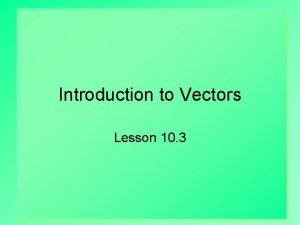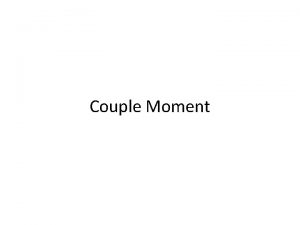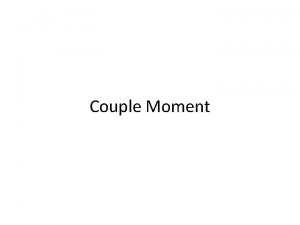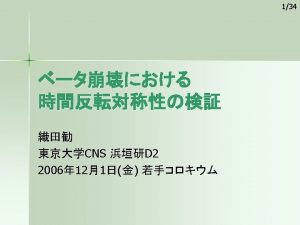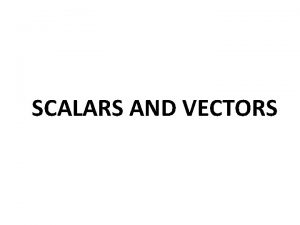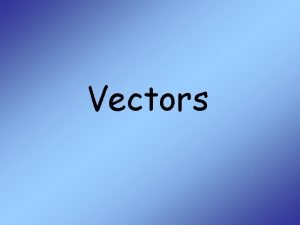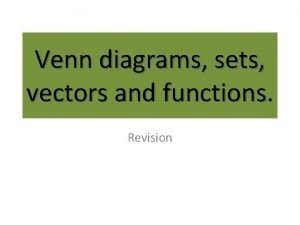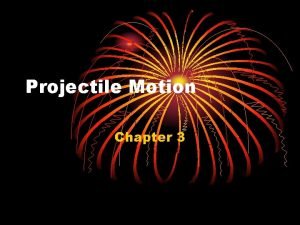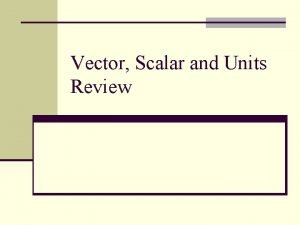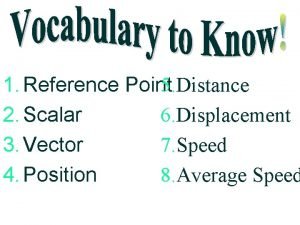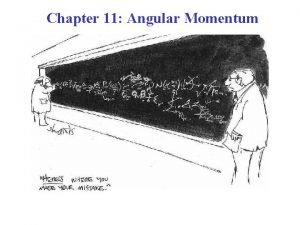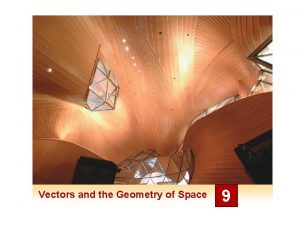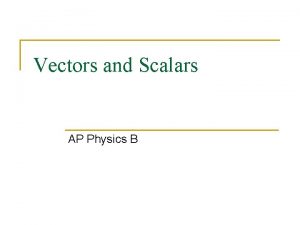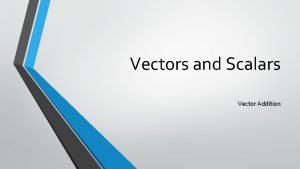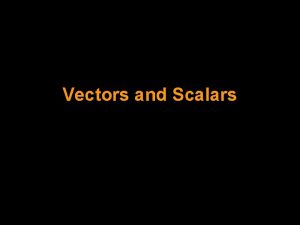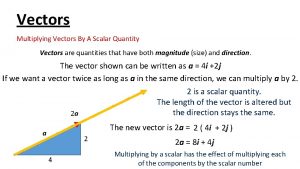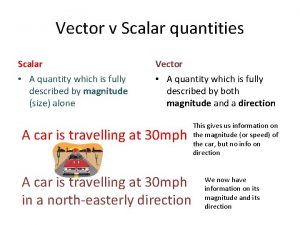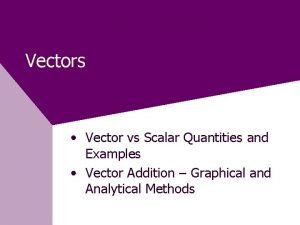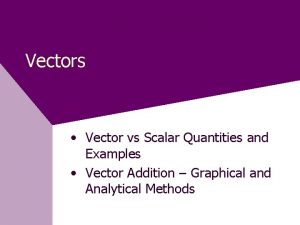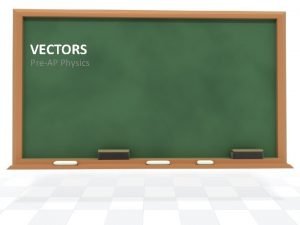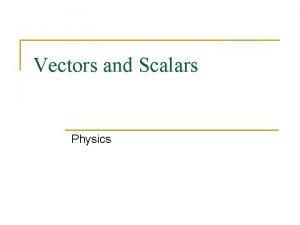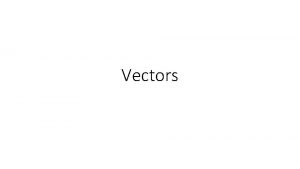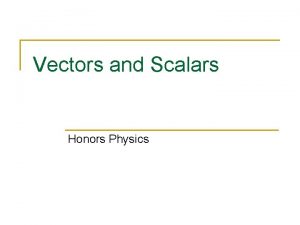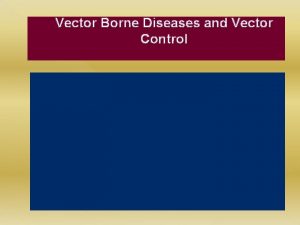FAD 01 Vectors Vector or Scalar A vector




















- Slides: 20

FAD -01 Vectors

Vector or Scalar • A vector quantity has both direction and magnitude (size). • In contrast a scalar quantity has magnitude only

We use Arrows to Draw Vectors • They have a Head and Tail

How are vectors drawn? • The length of the vector arrow is used to represent its size (in this case 316 N). • The direction of the arrow is measured as we would any other direction (in this case by the angle, which is 35˚ North of East)

Adding Force Vectors on the ‘Force Table’

What forces are acting on the climber? Add vectors by placing them head to tail R=0 Contact force of rock on climber Resultant force? Gravitational pull of Earth on climber

Adding Velocity Vectors in a Line

Adding Velocity Vectors in a Line

Some more examples Remember: the resultant vector could be negative (or in this case to the left)

Resultant Vector • When we add two or more vectors, it is absolutely crucial to take the direction of the vectors into account. • The process of adding two or more vectors is known as finding the RESULTANT of the vectors. • The resultant of two or more vectors is the single vector that could replace those vectors and still have the same effect in terms of both magnitude and direction.

Perpendicular Vectors • Things are slightly more complicated when vectors are not in a straight line. For example, when vectors are perpendicular to each other.

Are these planes experiencing a tail wind, head wind or cross wind?

tail wind, head wind or cross wind?

What’s happening?

Another Example

What forces are acting on the climber? Pull of rope on climber Contact force of rock on climber Gravitational pull of earth on climber The sum of these vectors is zero The man is in Equilibrium

Order in which the vectors are added does not matter

Horse towing a canal boat Pull of horse on boat Contact force of water on rudder Resultant vector An imaginary vector which has the same effect as other vectors added together

Regroup!! • Finalise your vector scalar groups • Copy these two groups into your notes

Vector Addition Game Base One • Draw a route from Home Base to Base One. • Rule 1 – You can only move horizontally or vertically • Rule 2 – Each section must be a whole numbers of squares.
 Scalar product of vectors
Scalar product of vectors Scalar vs vector
Scalar vs vector Moment of a couple formula
Moment of a couple formula Formula of couple
Formula of couple Scalar vector tensor
Scalar vector tensor Scalars and vectors
Scalars and vectors Vector vs scalar
Vector vs scalar Head to tail rule
Head to tail rule Draw a venn diagram of a ∩ b
Draw a venn diagram of a ∩ b Micro vector
Micro vector Is projectile
Is projectile Scalar versus vector quantities
Scalar versus vector quantities Vectors vs scalars
Vectors vs scalars Displacement formula distance
Displacement formula distance Centripetal acceleration
Centripetal acceleration Angular momentum is equal to
Angular momentum is equal to Sectional drive
Sectional drive Vector and scalar quantities
Vector and scalar quantities Vectors and the geometry of space
Vectors and the geometry of space Ap physics vectors
Ap physics vectors Displacement must always indicate what
Displacement must always indicate what

